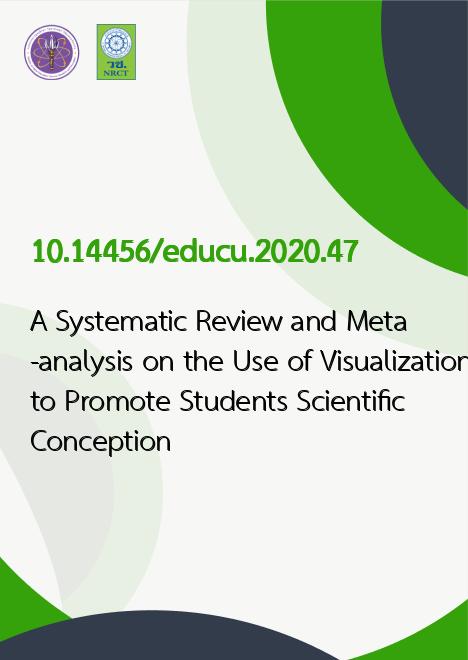
|
A Systematic Review and Meta-analysis on the Use of Visualization to Promote Students Scientific Conception |
|---|---|
| รหัสดีโอไอ | |
| Creator | Naphat Suknarusaithagul |
| Title | A Systematic Review and Meta-analysis on the Use of Visualization to Promote Students Scientific Conception |
| Contributor | Wannanida Puengnoi, Pongprapan Pongsophon |
| Publisher | Centre for Education Innovation, Print and Online Media |
| Publication Year | 2563 |
| Journal Title | Journal of Education Studies, Chulalongkorn University |
| Journal Vol. | 48 |
| Journal No. | 2 |
| Page no. | 74-91 |
| Keyword | systematic review, meta-analysis, visualization, scientific conception |
| URL Website | https://so02.tci-thaijo.org/index.php/EDUCU |
| Website title | Journal of Education Studies, Chulalongkorn University |
| ISSN | 2651-2017 (Online) |
| Abstract | This research aims to systematically review and meta-analyze the effect of visualization in teaching on conceptual development in science. Visualization is the representation of an abstract concept in a tangible way through a variety of modes to help us make a connection between three levels of presentation: macro, sub-micro and symbolic. Fourteen research articles from high-quality academic journals in science education indexed in Quartile 1 to 3 of SCimago database were retrieved. The effect size and the standard error of each study was calculated and estimated for the pooled effect, prediction interval, and heterogeneity using R program. The results indicate that the pooled effect was 0.78, which means that the overall effect of visualization in science teaching on the development of scientific conception was at a moderate level. There were nine studies having effect sizes higher than the pooled effect size. Of which, the studies with very high effect sizes shared notable characteristics. The visualizations used representations could well depict the phenomenon of interest at each and across all levels through an interactive, manipulative, and virtual environments such as augmented reality or virtual lab. |